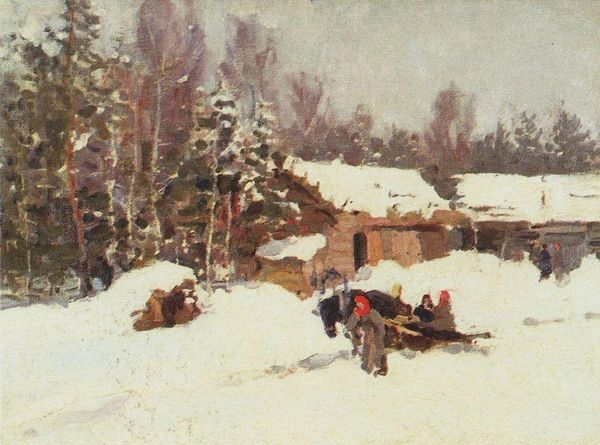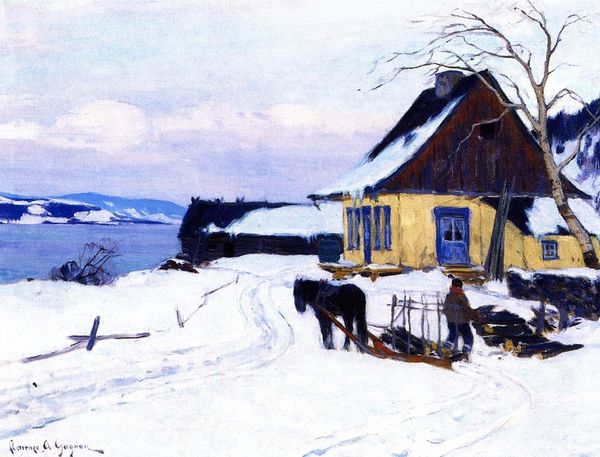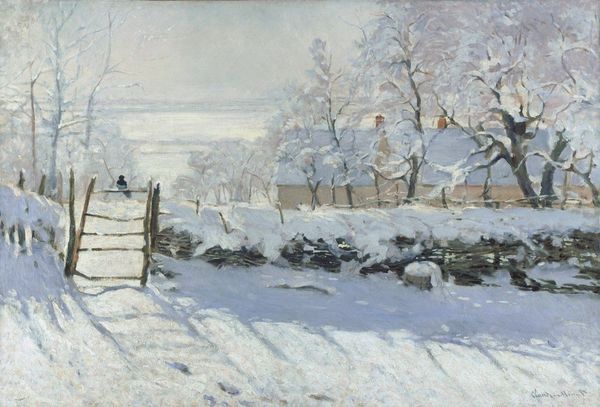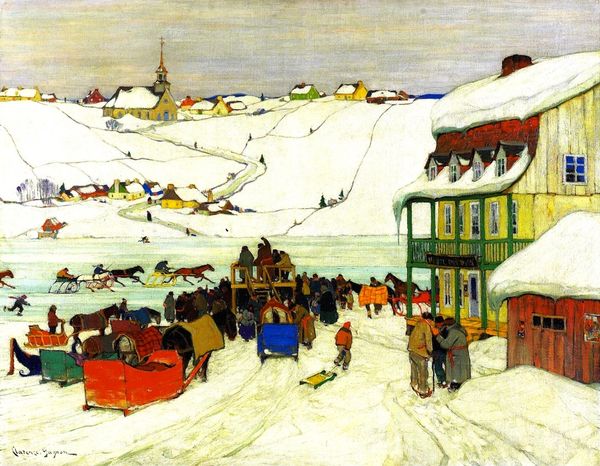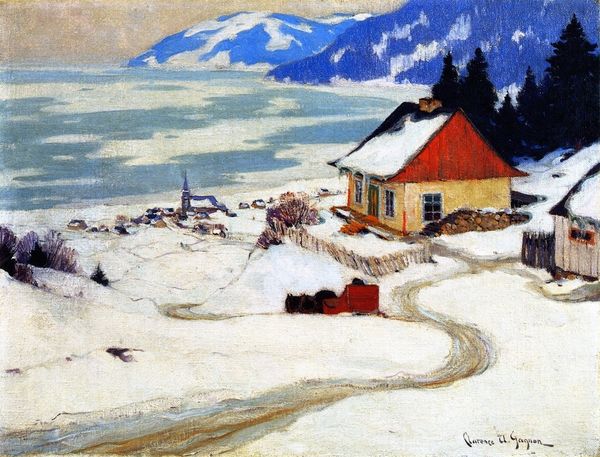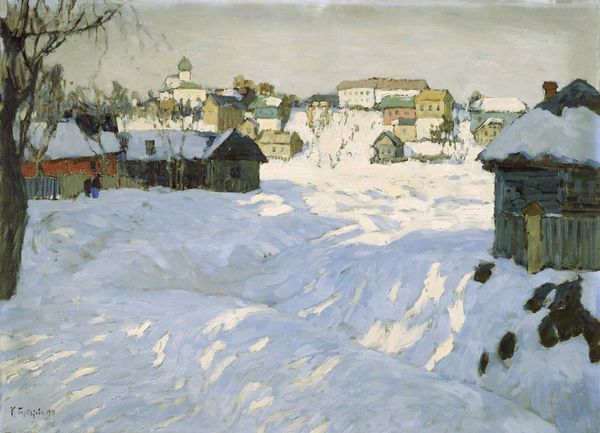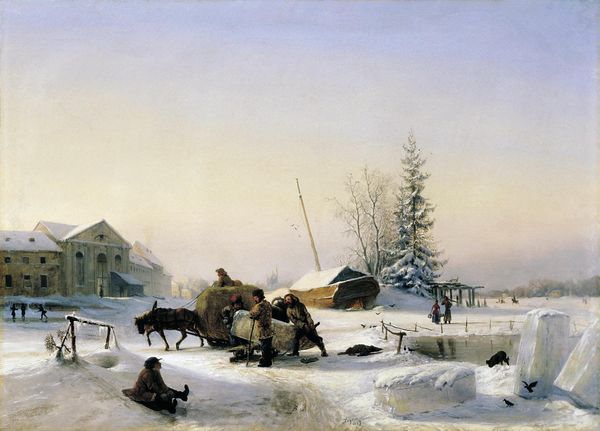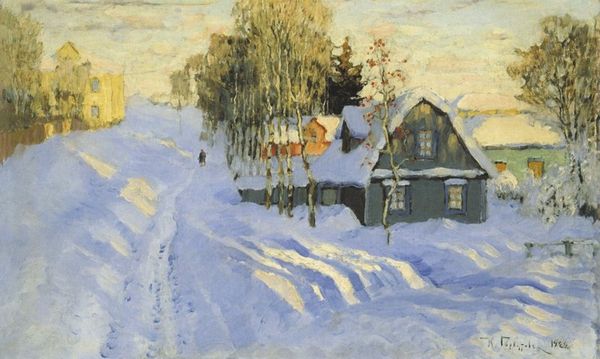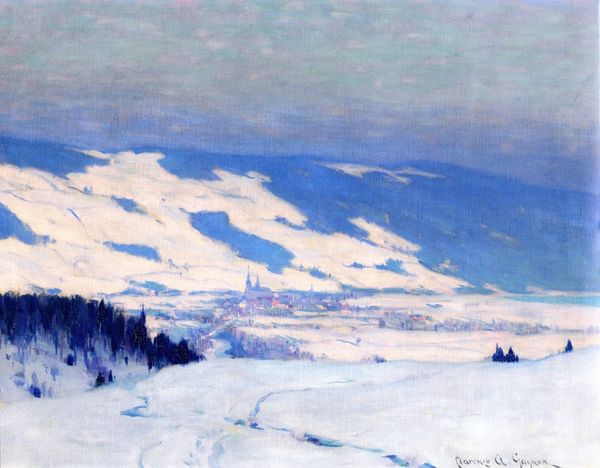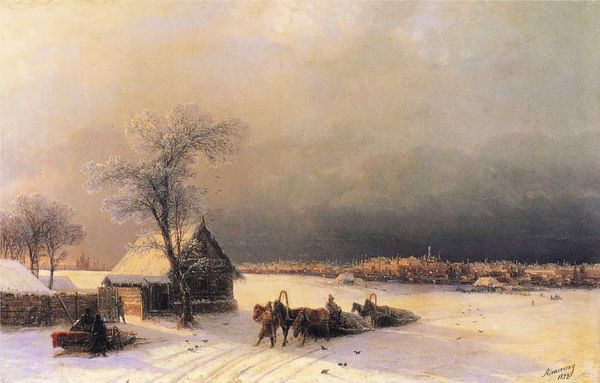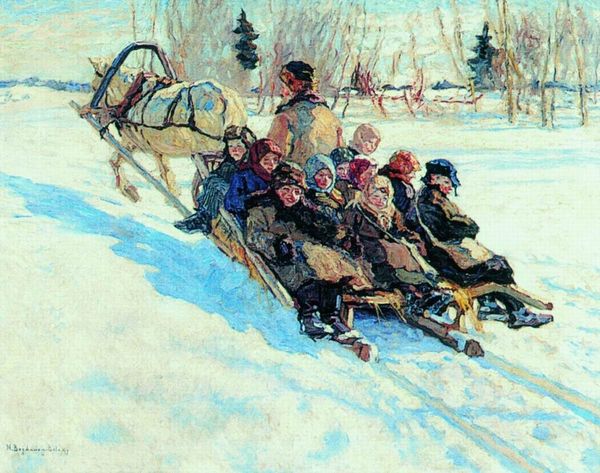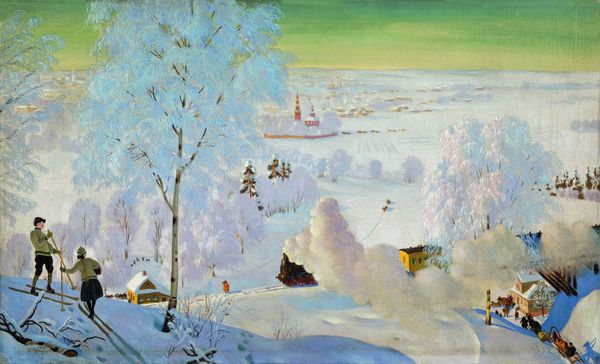
Copyright: Public domain
Curator: What a bracing scene. I'm immediately struck by the overwhelming sense of white, punctuated by these small figures and the distant landform. It feels both immense and intimate at once. Editor: Indeed. This is Clarence Gagnon's "The Ice Bridge, Quebec," painted around 1920. He's primarily known as a landscape painter, and this oil on canvas captures a traditional winter scene in Quebec. We see horse-drawn sleds traversing the frozen landscape. Curator: The way the artist renders the snow is quite interesting. It's not just flat white, but a mix of blues and purples, almost sparkling. It evokes that feeling of intense cold and the bright light reflecting off the snow. The stark trees also draw my eyes heavenward, accentuating verticality and nature’s power. Editor: The bright colors on the sleds—the red and blues—offer a welcome contrast. It does point to how Gagnon situates these travelers within a distinct time and place. Transportation networks in the early twentieth century were vastly different than they are now. What was the importance of painting these figures into a landscape? Curator: It's the embodiment of persistence! Winter travel, a necessary part of life, transformed into a colorful caravan, perhaps representing an enduring connection with tradition. And this procession into the distance carries undertones of a spiritual journey. The stark trees stand as silent, watchful guides. Editor: True. It reveals the complex relationship between nature and society, showing that even in a modernizing era, communities still relied on these old transportation methods to conduct work and their way of life, emphasizing that the role of winter still pervades the cultural imaginaries. Curator: Looking closely, notice that it's a group, suggesting community support. In what ways does it embody broader narratives that relate to a sense of journeying together and persisting? I am fascinated by the symbols we use when confronting what cannot be changed. Editor: It might be argued, though, that while this looks idyllic, many Indigenous communities experienced the pressures of colonial expansion during this same era, where many were denied their rights on ancestral land and natural resources, especially impacting those living in the northern reaches of Quebec. These paradisiacal visions can gloss over this harsh reality. Curator: A poignant point, as with all art, it opens to various interpretations—both personal and collective. Editor: Definitely food for thought as we continue navigating through the visual story of culture and history that artwork has to offer!
Comments
No comments
Be the first to comment and join the conversation on the ultimate creative platform.
